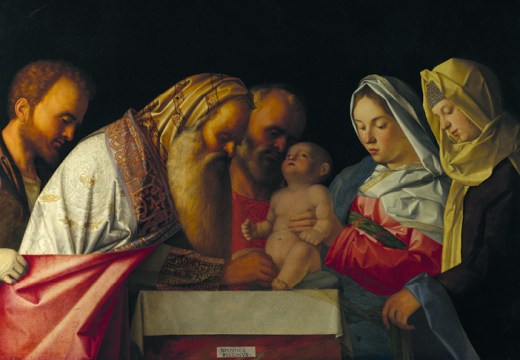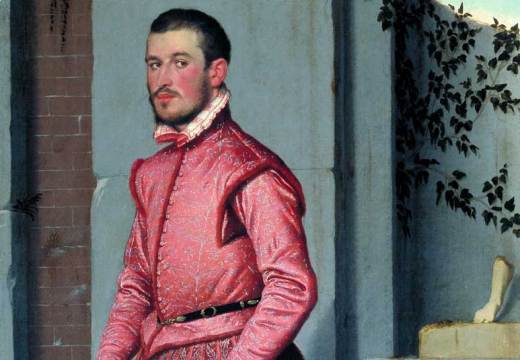From the February 2023 issue of Apollo. Preview and subscribe here.
David Young Kim’s Groundwork is an unfamiliar journey through familiar terrain. By looking closely at what is around, above, below and behind the figures in a handful of canonical paintings, Kim’s way of seeing reveals how these pictures work through their grounds – that is, ‘how art is groundwrought’. The result is an alternative and sometimes surprising history of Renaissance painting.
The book defines the term ‘ground’ in three ways. First, as the physical preparation and material support that primes a picture for its existence; second, as the painted surfaces where figures rest their feet: the planes that direct the viewer into the imaginative space of the picture. Third, ‘ground’ constitutes background – that is the area of the figure’s absence. By preparing a painting’s material foundation and constructing the represented plane as a stage for figures, artists engage in ‘groundwork’.
Language may be ‘a conspiracy against experience’, as Michael Baxandall put it, but here the many definitions of ‘ground’ and Kim’s interest in etymology are a useful starting point for discussion. An exploration of contemporary sources, such as Giorgio Vasari and Leon Battista Alberti, demonstrates that for these writers, ground (or campo, or piano) held agency, exerting influence on material, composition and interpretation.
The lexical agility of Groundwork may lean on historical treatises, but it is also built upon the technical study of paintings: a painting’s ground is crucial to its making. Different ground layers, their variations and the resulting effects are carefully explained: size (animal glue applied to panel), gesso (layers of gypsum), imprimatura (an additional layer that made gesso more luminous and less absorbent), and local priming (different coloured grounds applied to discreet areas). Grounds were just as important to painting on canvas as they had been to panel painting, as mediators between the weave of the canvas and paint. Coloured grounds could enhance Dosso Dossi’s chromaticism, while darker ones could enhance Parmigianino’s bravura handling. The fundamental importance of ground is attested by a couplet from a 15th-century German satirical treatise: ‘The ground they did not prepare as they ought / Thus is the work for naught.’
Kim acknowledges that he is treading a well-worn path as he follows the development of Italian painting from the gold ground of the trecento to the obscurity of tenebrist paintings. However recognisable the subjects, though, his case studies are carefully balanced between focused study and a wider view. In the work of Gentile da Fabriano, for example, gold ground pivots between the material and immaterial and the worldly and otherworldly, retaining an imprint of its former life as currency, as it alludes to global networks and the techniques of metalworking. Gold can be punched and scratched to reveal shimmering heavenly bodies, as in Gentile’s Madonna and Child with Angels. Here, gold ground and its subtle tooling, in particular, inspires what Kim calls a ‘workshop of looking’, as we are invited to see details. Gentile’s incised angels appear and disappear as they shimmer on their goldleaf background, in a tantalising analogy with Thomas Aquinas’s understanding of the movement of angels outside of time and space.
In another case study, a masterly tour around Giovanni Bellini’s Saint Francis in the Desert, Kim explores the cracks in the painting’s luminous stones. The saintly crags glow gold thanks to the panel’s shining white priming and underlayers of warm yellow paint. Cracked stones evoke the fissures of Golgotha and the muddy marshlands of Venetian lagoons, pre- senting apertures to metaphor and compelling the viewer to ask ‘What happened here?’ and ‘What will happen next?’
Turning from the rock to the wall, another case study focuses on the portraits of Giovanni Battista Moroni and their construction from mestica (brown priming layers) overlaid with translucent layers. Moroni’s celebrated grey walls, Kim notes, are not solid surfaces, but dynamic and chromatic complements to the flesh and hair of his sitters. Streaks of damp that seep across Moroni’s portrait of Faustino Avogadro are glimpses of brown mestica below grey pigment. Layers of paint are not opaque, rather they adapt to and ‘contain, without fully grasping, the figured self’, as cold stone comes into dialogue with warm flesh.
By contrast, Caravaggio’s black fields are spaces of omission, where darkness evades discovery. The artist’s practice of incising contours around shadows, to delineate areas of darkness, make these empty sites subjects in themselves. Contemporary critics refused to engage with the potentiality of these black spaces and dismissed the artist’s dark atmospherics: one writer reported that certain older artists thought Caravaggio ‘did not know how to come out of the cellars’. However, as Kim observes, the interiors in works such as the two versions of The Supper at Emmaus prompt the viewer to wonder not just ‘Who is there?’ but also ‘Who else is there?’ Even the darkest spaces of the pictorial field yield imaginative depths, as shadowy grounds anchor narrative suspension, buzzing with energy and possibility. Blackness is a pause in action, where the preceding moment is remembered and the moment to come is evoked. In both versions of The Supper at Emmaus, the black void alludes to Christ’s sudden appearance and future absence. In this way, ‘groundwork’ becomes essential to narrative, as it always has been: Duccio’s rocky outcrops, which exaggerate the bodily gestures that describe figures’ emotional worlds, and Bellini’s chequered floors, which map distance in strides, impart both distance and closeness between figures.
Kim uses technical evidence to great effect, but issues of condition and conservation are largely absent from the discussion, with the exception of a brief caveat on how the increasing transparency of the oil paint might affect Caravaggio’s shadows. Nonetheless, this is a splendidly expansive work that successfully unites material with metaphor. Beautifully illustrated and playful in tone, this book should be celebrated for its originality and, above all, as an invitation to ever closer looking.
From the February 2023 issue of Apollo. Preview and subscribe here.
Unlimited access from just $16 every 3 months
Subscribe to get unlimited and exclusive access to the top art stories, interviews and exhibition reviews.














![Masterpiece [Re]discovery 2022. Photo: Ben Fisher Photography, courtesy of Masterpiece London](http://www.apollo-magazine.com/wp-content/uploads/2022/07/MPL2022_4263.jpg)
Why are fathers so absent from art history?